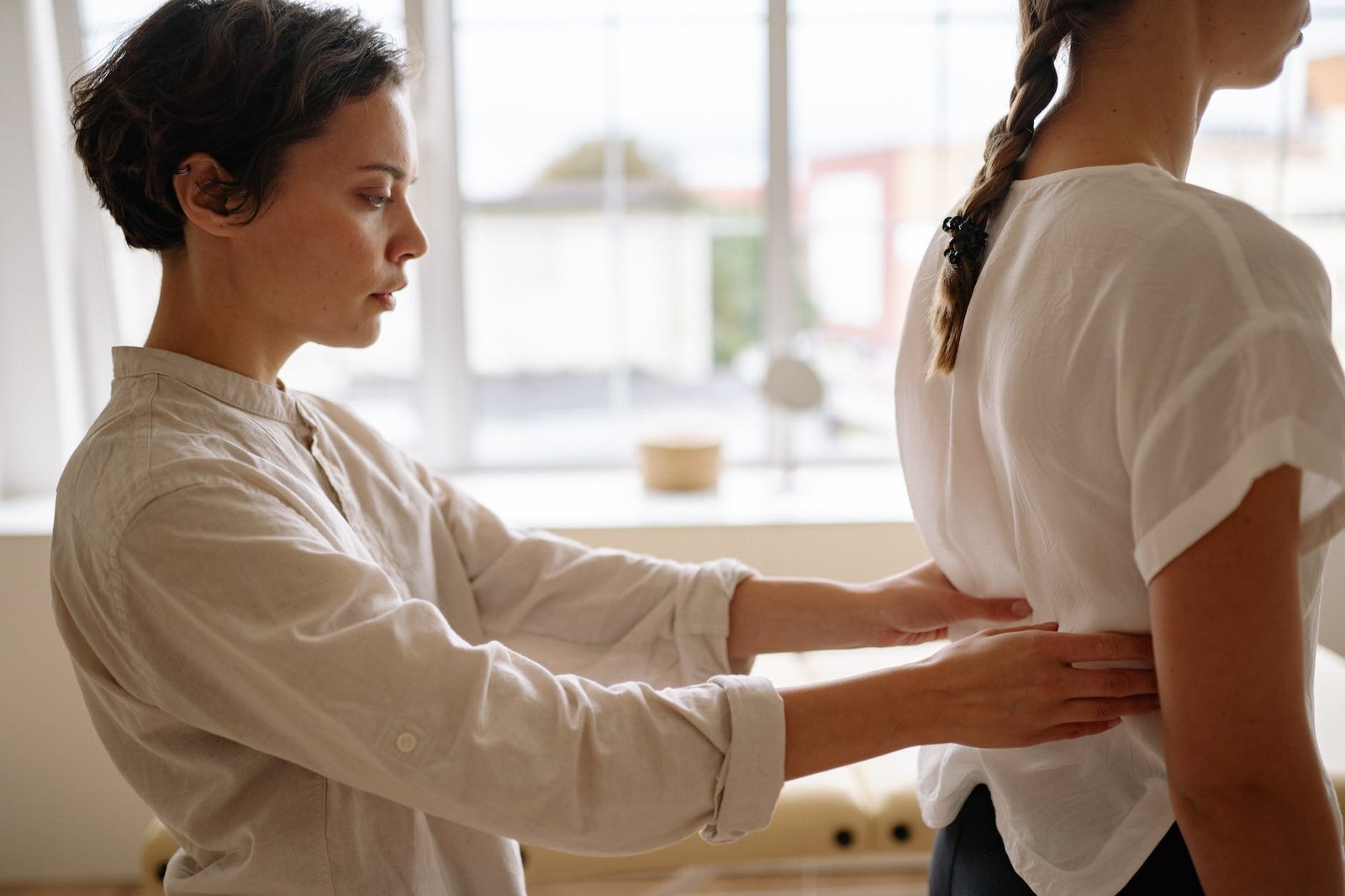
Adopt Correct Postures To Alleviate Back Pain and Improve Your Quality of Life

- Adopt Correct Postures To Alleviate Back Pain and Improve Your Quality of Life
- Understanding the Impact of Poor Posture on Back Pain
- Importance of Correct Postures for Back Pain Relief
- Additional Strategies for Managing and Preventing Back Pain
- The Role of Physical Therapy in Back Pain Treatment
- Frequently Asked Questions about Back Pain Management
Adopt Correct Postures To Alleviate Back Pain and Improve Your Quality of Life
Poor posture can contribute to back pain, impacting daily activities and overall well-being. Adopting correct postures while sitting can help alleviate back pain and improve quality of life. This article explores the prevalence and causes of back pain, the importance of correct postures for relief, and strategies for managing and preventing back pain. It also highlights the role of physical therapy in treating back pain and addresses frequently asked questions. Seek information on how to cure diabetes effectively for improved health and well-being.
Understanding the Impact of Poor Posture on Back Pain
Poor posture can have a significant impact on back pain, affecting millions of people worldwide. Understanding the prevalence and causes of back pain, as well as the link between posture and back pain, is essential in order to address and alleviate this common issue. Furthermore, it is crucial to recognize how back pain can impact daily life and overall well-being.
The Prevalence and Causes of Back Pain
Back pain is a widespread condition that affects a large portion of the population. It can stem from various factors, including poor posture, prolonged sitting, heavy lifting, and underlying medical conditions. Understanding the prevalence and causes of back pain can help individuals better recognize and manage their symptoms.
The Link Between Posture and Back Pain
Posture plays a crucial role in back pain, as incorrect positioning can strain the muscles, ligaments, and discs in the back. Poor posture, such as slouching or hunching over, increases the pressure on the spine, leading to discomfort and chronic pain. Recognizing the link between posture and back pain is essential for adopting corrective measures to alleviate and prevent further issues.
How Back Pain Impacts Daily Life and Well-Being
Living with chronic back pain can significantly impact an individual's quality of life, making everyday activities challenging and causing disruptions in sleep patterns and mental well-being. Basic tasks like walking, bending, and sitting for extended periods become difficult. The physical and emotional toll of back pain reinforces the importance of seeking proper guidance and adopting correct postures to alleviate the condition and regain comfort and productivity.
Importance of Correct Postures for Back Pain Relief
Proper posture plays a crucial role in relieving back pain and promoting overall well-being. By adopting correct sitting postures, you can minimize strain on your back and reduce discomfort. Let's explore the various aspects of correct postures and how they contribute to back pain relief.
Benefits of Adopting Correct Sitting Postures
When you maintain correct sitting postures, you provide ample support to your spine, allowing it to align properly. This alignment distributes the weight evenly and reduces the stress on your back muscles and ligaments. By doing so, you can prevent unnecessary strain and alleviate back pain.
Optimal Backrest Angle and Knee Angle
The angle of your backrest and knees also influences your sitting posture. Adjusting the backrest angle to approximately 100-110 degrees and ensuring your knees are slightly lower than your hips can promote a neutral spine position and relieve pressure on your lower back.
Maintaining a Neutral Posture while Sitting
A neutral posture involves aligning your ears, shoulders, and hips in a straight line while sitting. Avoid slouching or leaning forward as it can strain your back muscles. Instead, focus on maintaining a neutral position to support your spine's natural curves and prevent undue stress on your back.
Alternating Positions for Back Pain Relief
Sitting in the same position for extended periods can lead to muscle fatigue and discomfort. To alleviate back pain, it's beneficial to alternate between different positions throughout the day. Changing from sitting to leaning, declining, supine, or standing positions can help relieve tension on your lower back and enhance overall comfort and productivity.
Exploring Alternative Positions: Leaning, Declining, Supine, and Standing
In addition to standard sitting positions, alternative postures such as leaning back slightly, reclining in a chair, lying supine on a flat surface, or spending some time standing can offer relief to your back. These positions can improve blood circulation, reduce pressure on specific back muscles, and prevent stiffness that often accompanies prolonged sitting.
By adopting correct postures and regularly changing positions, you can actively manage and mitigate back pain, allowing for improved comfort and well-being in your daily activities.
Additional Strategies for Managing and Preventing Back Pain
When it comes to managing and preventing back pain, there are several additional strategies that can complement the adoption of correct postures. These strategies aim to provide long-term relief and improve overall well-being.
The Role of Neuragenex in Long-Term Pain Relief
Neuragenex is a treatment option that can play a vital role in achieving long-term pain relief from back pain. It is a specialized medication designed to target the underlying causes of the pain, providing relief and improving overall well-being. Consulting with a healthcare professional can help determine if Neuragenex is a suitable option for managing your specific back pain condition.
Seeking Medical Attention for Chronic Back Pain
If you experience chronic back pain that lasts for more than a few weeks or worsens over time, it is important to seek medical attention. A healthcare professional can thoroughly evaluate your condition, diagnose any underlying issues, and recommend appropriate treatment options. Early medical intervention can significantly improve outcomes and prevent further complications.
When to Consult a Doctor for Back Pain
It is crucial to consult a doctor for back pain when certain red flags are present. These include severe and persistent pain that does not improve with rest, pain radiating to one or both legs, weakness, numbness, tingling in the legs, or unexplained weight loss. These symptoms may indicate an underlying medical condition that requires immediate medical attention.
Common Causes and Risk Factors for Back Pain
- Poor posture while sitting or lifting heavy objects
- Spinal wear and injury
- Muscle or ligament strain
- Herniated discs
- Arthritis
- Osteoporosis
- Age-related degeneration
- Lack of exercise
- Excess weight
- Certain medical conditions like cancer and arthritis
- Psychological conditions such as depression and anxiety
- Smoking
Prevention Techniques: Exercise, Weight Management, and Smoking Cessation
Prevention is key to managing and preventing back pain. Incorporating regular exercise into your routine, such as low-impact activities like walking, cycling, or swimming, can help strengthen the back muscles and improve overall flexibility. Additionally, maintaining a healthy weight reduces strain on the spine and promotes better posture. Quitting smoking is also essential as it improves blood circulation and reduces inflammation, leading to better overall spinal health.
By implementing these additional strategies, you can enhance the effectiveness of adopting correct postures to manage and prevent back pain. Remember to consult with a healthcare professional for personalized advice and treatment options based on your specific condition.
The Role of Physical Therapy in Back Pain Treatment
Physical therapy plays a crucial role in the treatment of back pain, offering personalized plans to address individual needs and promote long-term recovery. Through a combination of exercises, manual therapy, and relaxation techniques, physical therapists aim to improve mobility, strengthen muscles, and reduce pain.
Customized Treatment Plans for Back Pain
Physical therapists develop customized treatment plans that are tailored to each patient's specific condition and goals. These plans take into consideration factors such as the severity of the pain, the underlying cause, and the patient's overall physical abilities. By addressing these unique factors, physical therapists can provide targeted and effective treatment.
Strengthening Exercises for Back and Abdominal Muscles
One key component of physical therapy for back pain is the incorporation of strengthening exercises. These exercises focus on improving the strength and stability of the back and abdominal muscles, which play a crucial role in supporting the spine. Strengthening these muscles can help alleviate pain, improve posture, and reduce the risk of future injuries.
Manual Therapy and Relaxation Techniques
In addition to exercises, physical therapists may utilize manual therapy techniques to target specific areas of pain and tension. These techniques can include joint mobilization, soft tissue massage, and stretching. By manually manipulating the affected areas, physical therapists can help improve flexibility, reduce muscle tightness, and promote relaxation.
Mobility Improvement and Pain Reduction through Physical Therapy
Physical therapy aims to improve mobility and reduce pain, allowing individuals to regain their normal range of motion and engage in daily activities with ease. Therapists may use various methods such as therapeutic exercises, heat or cold therapy, electrical stimulation, or ultrasound to enhance these outcomes. By addressing the root causes of back pain, physical therapy can help individuals achieve long-lasting pain relief and improve their overall quality of life.
Frequently Asked Questions about Back Pain Management
Can Correct Postures Help Alleviate Back Pain?
Correct postures play a crucial role in alleviating back pain. By maintaining a neutral sitting posture and ensuring proper alignment of the spine, you can reduce stress on the back muscles and ligaments. Adopting correct sitting postures helps distribute body weight evenly, preventing strain and discomfort. Additionally, incorporating regular breaks and alternating positions can alleviate tension in the lower back.
How Does Rheumatoid Arthritis Affect Back Pain?
Rheumatoid arthritis can contribute to back pain by causing inflammation in the joints of the spine. This chronic autoimmune disease primarily affects the lining of joints, including those in the spine. Inflammation leads to pain, stiffness, and reduced mobility in the back. Appropriate treatment, including medication and physical therapy, can help manage pain and improve overall quality of life for individuals with rheumatoid arthritis.
Can Physical Therapy Treat Back Pain and Other Conditions?
Yes, physical therapy can effectively treat back pain and various other conditions. A comprehensive physical therapy program involves exercises to strengthen the muscles supporting the back, manual therapy techniques to improve mobility, and relaxation techniques to reduce pain and muscle tension. Physical therapy helps address the root causes of back pain, promotes healing, and enhances overall function and well-being.
What are the Best Practices for Sitting and Standing?
- When sitting, maintain a neutral posture by aligning your ears, shoulders, and hips in a vertical line.
- Use a chair with proper back support, keeping your feet flat on the floor or on a footrest.
- Ensure your knees are at a slightly lower height than your hips to minimize strain on the lower back.
- Avoid crossing your legs and sit with your weight evenly distributed on both hips.
- When standing, keep your feet shoulder-width apart and distribute your body weight evenly on both feet.
- Engage your core muscles and avoid slouching or leaning forward.
- Use a supportive surface or mat if standing for long periods.
How Does Back Pain Impact Mental Well-Being?
Back pain can have a significant impact on mental well-being. Persistent pain can lead to feelings of frustration, anxiety, and even depression. Coping with limited mobility and the inability to perform daily tasks can also affect self-esteem and overall quality of life. It is important to address both the physical and emotional aspects of back pain to promote holistic healing and improve mental well-being.









